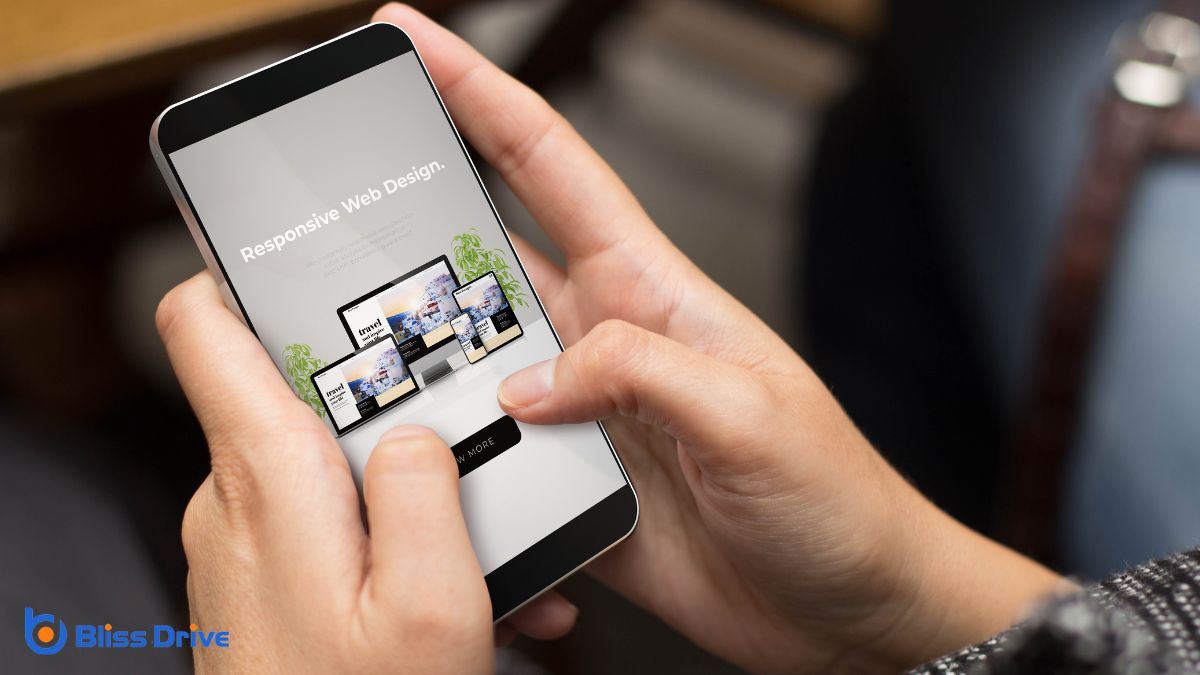Digital Marketing Services
Learn More About Us

Mobile optimizationDesigning and formatting web content to ensure it performs well on mobile devices. directly boosts accessibility, letting everyone, including those with disabilities, easily interact with your site. By using responsive designA web design approach that makes web pages render well on a variety of devices and window or screen ... and adaptive text, you guarantee that pages look great on all screens. Enhanced navigation and mobile-friendly forms simplify user interactions. Alt textDescriptions added to images to help search engines understand the content of images. makes images comprehensible through screen readers, while proper color contrast aids visibility. Assistive technologies, like text-to-speech, further empower users. Dive deeper to see how these steps can broaden your reach.

When you explore mobile optimization and accessibility, you'll discover how essential they are for enhancing user experience and reaching a wider audience.
Embracing mobile optimization guarantees that your website functions smoothly on smartphones and tablets, providing users with fast loading times and intuitive navigation. It's about crafting a seamless experience that keeps users engaged, regardless of the device they use.
Accessibility, on the other hand, focuses on making digital content available to everyone, including people with disabilities.
By incorporating features like screen reader compatibility, adjustable text sizes, and alternative text for images, you make your site more inclusive. This not only broadens your audience but also complies with legal standards and demonstrates social responsibility.
Prioritizing both elements boosts your site's effectiveness and reputation.
You can't underestimate the impact of responsive design on enhancing user experience.
By adapting to different screen sizes, responsive design guarantees your website looks great and functions smoothly on any device.
Plus, it improves load times, keeping your audience engaged and reducing bounce rates.
In today's digital landscape, guaranteeing a seamless user experience hinges on the importance of responsive design. When you prioritize this, you're not just adapting to different screen sizes; you're enhancing accessibility for everyone.
Responsive design means your website adjusts fluidly across devices, offering consistent navigation and readability. This adaptability guarantees that users with disabilities can access content without barriers, improving overall satisfaction.
Think about users with vision impairments or motor disabilities; a responsive design helps them navigate more easily. It guarantees text is legible, buttons are accessible, and the layout is intuitive.
When you focus on these elements, you create an inclusive environment where users feel valued. Ultimately, investing in responsive design isn't just about aesthetics—it's about making your digital space welcoming for all.
Responsive design not only enhances accessibility but also plays a significant role in improving load times. When your website adapts seamlessly to various devices, it loads faster, providing a smoother experience.
Imagine visiting a site that takes ages to load; you'd likely leave, right? By optimizing your site with responsive design, you guarantee quick loading times, keeping users engaged and satisfied.
A streamlined, responsive site reduces unnecessary elements, minimizing data transfer and boosting speed. Faster load times mean less frustration for users, particularly those with slower internet connections.
This approach not only benefits accessibility but also improves your site's overall performance. Remember, a fast-loading site isn't just a preference—it's essential for retaining visitors and enhancing user engagementThe level of interaction and involvement users have with social media content..
When maneuvering the digital landscape, adapting to diverse screen sizes becomes essential to maintaining a seamless user experience. You want every visitor to your site to have smooth navigation, whether they're using a smartphone, tablet, or desktop.
Responsive design guarantees your content automatically adjusts to fit various screens, enhancing accessibility for all users. By doing so, you cater to people with different devices and viewing habits, reducing frustration and improving engagementThe interactions that users have with a brand’s content on social media..
Consider using flexible grids, fluid images, and media queries. These tools help your website respond to any device size.
Prioritizing mobile optimization means acknowledging that users expect fast, intuitive interactions. Don’t let a poorly optimized site drive users away. Instead, embrace responsive design, and you’ll make your content accessible and engaging for everyone.
When you’re optimizing text for mobile, start with the right font size to guarantee readability without zooming.
It's also essential to use high contrast and appropriate colors to make your text stand out clearly against the background.
Don't forget to adjust line spacing so each line is easy to follow and doesn't overwhelm the reader.
Proper font size plays an essential role in mobile optimization, guaranteeing users can easily read and engage with content on their devices. When text is too small, users struggle to read it, leading to frustration and potential abandonment of your site.
By choosing an appropriate font size, you enhance readability and accessibility, making it easier for everyone, including those with visual impairments, to interact with your content.
You should aim for a minimum font size of 16 pixels for body text. This size strikes a balance between readability and space optimization on smaller screens.
Additionally, make sure there's adequate spacing between lines and paragraphs to prevent text from appearing cramped. Prioritizing font size enhances user experience and keeps visitors engaged with your mobile content.
Guaranteeing ideal contrast and color on mobile devices is essential for text readability. Without the right contrast, text can blend into the background, making it hard for users to read. This is especially vital for those with visual impairments.
You should aim for a contrast ratio of at least 4.5:1 for normal text and 3:1 for large text.
When optimizing for mobile, consider these key points:
Although often overlooked, line spacing plays an important role in text readability on mobile devices. When you're designing for smaller screens, guaranteeing the text is easy to read without causing eye strain is vital.
Adequate line spacing, also known as leading, helps readers' eyes track text more efficiently and prevents words from appearing cramped. Aim for line spacing that's about 1.5 times the font size, though this can vary depending on the font and design.
You might think tight spacing saves space, but it often leads to a cluttered look, making reading difficult. By adjusting line spacing, you provide a more pleasant reading experience, especially for users with visual impairments.
How can you make sure your mobile users have a seamless experience? Start by enhancing navigation with an intuitive design.
Prioritize ease of access because it directly impacts how users interact with your site. Implementing a few key strategies can greatly improve user experience:
These steps will enhance user navigation, ensuring that your mobile site isn't only accessible but also user-friendly.
When optimizing a mobile site, don't overlook the importance of alt text and image accessibility. Alt text guarantees that visually impaired users can understand your content through screen readers. It's important to describe images accurately and succinctly. If an image conveys essential information, make sure your alt text captures that essence.
This practice not only aids accessibility but also improves SEO, since search engines rely on alt text to index images.
For mobile users, loading speed is imperative. Use appropriately sized images to guarantee quick load times without sacrificing quality. Combine this with effective alt text for a seamless experience.
Just as alt text and image accessibility enhance user experience, mobile-friendly forms and inputs are key to engaging users effectively.
When forms and inputs are optimized for mobile, users can interact seamlessly and complete actions without frustration. You want your forms to be intuitive and easy to navigate on any device.
To make your forms mobile-friendly:
These simple adjustments can greatly improve the accessibility and usability of your mobile forms.
Addressing color contrast and visual impairments is essential to ensuring all users can access and interact with your mobile content effectively. You should prioritize high color contrast between text and background to make reading easier for users with visual impairments.
Tools like the Web Content Accessibility Guidelines (WCAG) help you determine suitable contrast ratios. Avoid relying solely on color to convey information; instead, combine colors with text or icons.
Consider users with color blindness by using patterns or textures alongside colors to differentiate elements. Test your mobile site with various accessibility tools to see how it performs for those with visual challenges.

Mobile assistive technologies have transformed the way users with disabilities interact with devices, making digital content more accessible than ever.
As you navigate mobile optimization, leveraging these technologies can greatly enhance the user experience. By integrating features like screen readers, voice commands, and text-to-speech, you guarantee everyone can engage with your content effectively.
Here are a few ways you can maximize accessibility:
By focusing on mobile optimization, you're enhancing accessibility for all users. Prioritizing responsive design guarantees that content adapts seamlessly to any device, making navigation easier. Confirming text readability and using alt text for images further improves the user experience. Don’t overlook mobile-friendly forms and appropriate color contrast to accommodate visual impairments. Embrace mobile assistive technologies to create a more inclusive environment, assuring everyone can access and enjoy your content without barriers.
